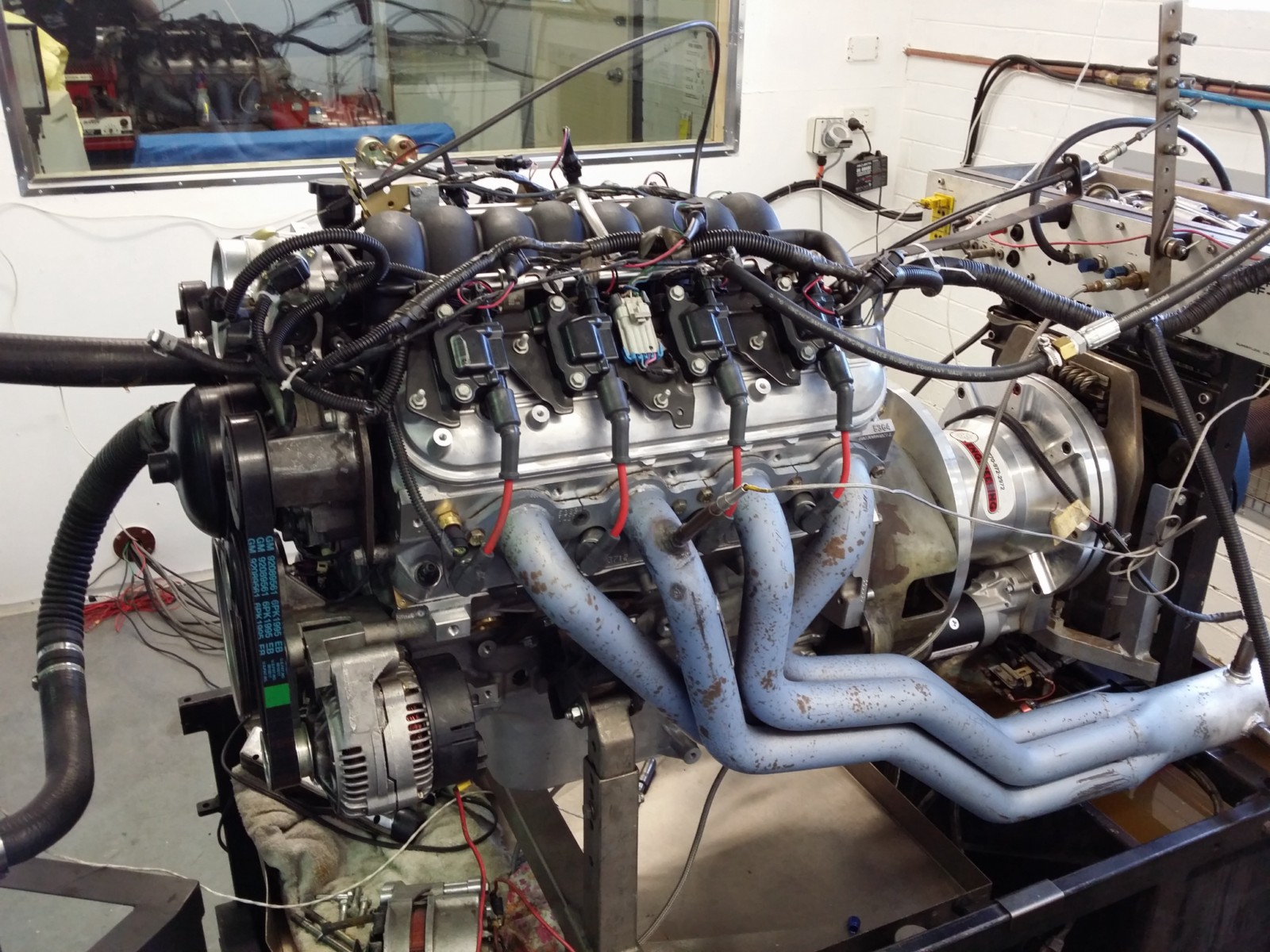

The final numbers are in...over 630 bhp in the room @ 6000 rpm and 610 ft.lbs torque @ 4500 rpm. Corrected power 659 bhp and 633 ft.lbs torque.
An excellent Bracket Race or limited street application LS Chev V8 engine. Take a factory 7 litre alloy block, factory L98 6 litre big port heads, factory L98 intake manifold and injectors. Replace the factory fly by wire throttle body with an aftermarket mechanical throttle body. We used an Edelbrock cast alloy version with 90mm diameter bore. Factory coils, factory ECU out of a VY Commodore tuned using HP Tuners software. Pump 98 octane fuel, off the shelf 1 7/8" primary 4-1 extractors.
In fact this combination is pretty basic in terms of parts used. Everything is factory including the stock valve train with stock rockers, Topline hydraulic roller lifters in stock factory lifter cradles. The key to the success of such an engine of course is the camshaft and compression ratio to match the unported L98 heads air flow and port volume specifics on a 4.125" diameter cylinder bore and 4.00" stroke making 427ci capacity just like a factory LS7.
We made a custom camshaft for this engine to produce the strongest power/torque output given the use of pump fuels. Our cylinder pressure curves are right on the money for maximum output with the valve timing and static compression ratio used. Dynamic compression is ideal for competition use in either Drag Racing Brackets or circuit racing applications. We however recommend the use of Dry Sump systems for circuit racing. Very few modern engines like this can sustain any sort of endurance work on a circuit with even the best wet sumps. For Drag Racing this is often not a problem but once you begin turning corners it slowly but surely empties the pan scuffing rod bearings on every lap. The inevitable result is failed rod bearings and ultimate disaster.
Circuit racers today have such excellent chassis, brakes and tyres that the G-Forces generated in the twisties creates havoc in the oil pan. Windage, aeration and severe slosh hurt everything in relation to keeping liquid oil supplied under pressure to all the bearings. As the rpm's climb and the pan is emptied into the valve covers this problem is greatly exacerbated to the point where bearings are no longer kept away from crank journals with a solid oil film to protect both.
On another note, we are constantly hearing from customers that they bought the latest trick of the day CNC ported heads, aftermarket intakes and other such components for their LS engines. This engine should at least give many people some food for thought in relation to junking the stock factory components. In nearly 90% of applications you simply don't need to do so. The factory is giving you race parts in a stock 6 litre and 6.2 litre engine. Why would you abandon those excellent power makers in the light of this fact? Well some people simply cannot be told. I hope some of you think about this carefully before spending big loads of money in the wrong places.
See this engines in room dyno sheet and the corrected power dyno sheet here...
http://comeracing.com/content/427ci-ls-chev-v8-bracketmaster-dyno-sheets-0